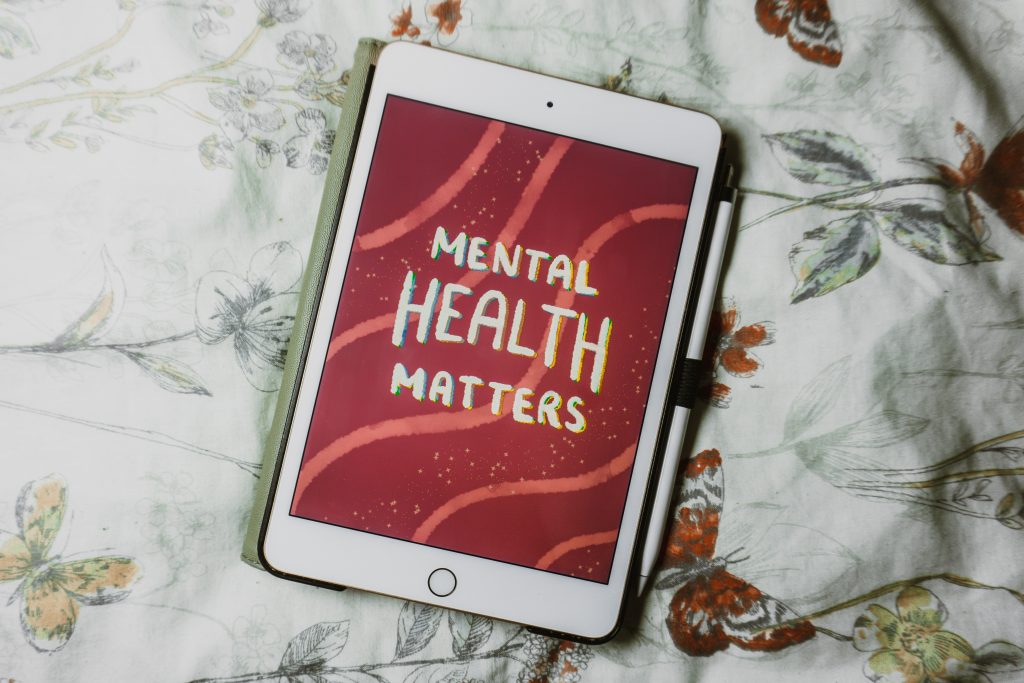
Some say that more young people than ever before are talking about their mental health, and that it is becoming increasingly acceptable to seek psychological support. However, is this perception reflective of reality, or are we simply wearing rose-tinted glasses? Do adolescents truly feel like there is less public stigma towards mental health problems in young people, or is this a pipe dream?
Worldwide, approximately 14% of adolescents aged 15-19 years have a diagnosed mental health disorder (United Nations Children’s Fund, 2021), with this statistic increasing over the past few decades (Collishaw, 2015). Although some of this increase may be driven by better public awareness of mental health problems, stigma amongst the general population regarding this topic remains a significant problem. For example, over 1 in 3 young people with mental health problems in the UK report first-hand experiences of the negative effects of stigma, including reduced confidence and less willingness to seek professional support (YMCA, 2016). These downstream consequences only add to the problem of mental ill health, and highlight why this issue must be studied further.
One way of tackling this is to focus on understanding young people’s perceptions of the issue – what do adolescents think about the prevalence of mental health problems among young people, and what is their understanding of public stigma? These are questions which Veronica Hermann and colleagues decided to explore in their qualitative study.

Many young people with mental health challenges experience stigma – e.g., being perceived to be “crazy” or “dangerous to others”.
Methods
32 adolescents (14 boys and 18 girls), aged between 15-18 years, were recruited from five secondary schools across Gotland (Sweden’s largest island). Semi-structured interviews were conducted in five focus groups (n = 27) or on an individual basis (n = 5). Focus groups consisted of 4-7 young people; two groups were all-girls, one was all-boys, and the remaining two were mixed gender.
Adolescents were asked what came to mind when they heard the terms “mental health” and “mental health problems”, the differences between good and poor mental health, their thoughts about why people view mental health in different ways, and the situation on Gotland specifically. They were also given opportunities to add further ideas and opinions.
Interview transcripts were analysed inductively using a four-step systematic text condensation method (Malterud, 2012). This involved identifying and sorting initial meaningful units of data into themes and categories, which were then validated against original transcripts. The authors engaged in reflexive practice throughout the study, with team discussions about preconceptions, interpretations, and interview technique.
Results
Analysis generated three main themes, each with two sub-categories:
Theme 1: “Having a mental health problem is the new normal”
- Adolescents perceived mental health issues to be common and an increasing problem, affecting the “majority” of young people.
- They suggested that this high prevalence could be due to pressures from school, social norms, and social media.
- Adolescents perceived mental disorders as “contagious” and felt at higher risk of poor mental health when surrounded by friends struggling with it themselves. Feeling overwhelmed by the responsibility of supporting someone else, or being unable to help them, was thought to exacerbate this.
- It was agreed that mental health issues are indiscriminate, affecting anyone and with many causes.
- Adolescents felt that their own awareness and understanding of mental health issues had improved as they grew older, and believed that their generation is more knowledgeable and transparent than previous generations.
- Some also felt that there has been a change in perception at a societal level, with fewer taboos on the topic making young people feel more able to speak up and seek help.
Theme 2: “What others think of you affects you”
- Adolescents felt that stereotypic norms (e.g., traditional gender norms, and prejudices related to ethnicity and mental health status) could lead to feelings of exclusion, which may in turn take a toll on mental health.
- Gender norms were discussed in particular depth, with the “macho norm” preventing boys from being able to speak about their feelings and seek support.
- Adolescents recognised that some may disregard mental health problems in young people as a normal part of growing up, and that this view was problematic.
- Participants reflected on the impact of living in a small geographical area, citing it as a causal factor for mental health issues and prejudice, as “everybody knows everybody” and rumours spread easily.
Theme 3: “If others lack experience and knowledge, they don’t respond well”
- Adolescents suggested that a lack of familiarity or understanding of mental health problems could lead to prejudice against the unknown, resulting in discriminatory behaviour towards those struggling with mental health.
- They felt that other young people were less familiar and more prejudiced towards less common conditions (e.g., schizophrenia) than more common conditions (e.g., depression, anxiety). However, it was recognised that prejudice exists across the entire spectrum of mental health problems.
- Lack of knowledge was seen as a considerable barrier to helping others, as people who are unsure about the best way to help may hold back for fear of making the situation worse.

Adolescents perceived mental health problems in young people to be increasingly common and exacerbated by prejudices, biases, and stereotypical norms and beliefs.
Conclusions
The authors concluded that:
“mental health problems are a normal part of their [adolescents’] lives”.
However, these issues:
“might be disregarded because of a preconception that feeling unwell is a normal state of mind for young people these days”.
It was inferred that public stigma can lead to “avoidance and reluctance to help people with mental health problems”, and that individuals are more likely to internalise stereotypes and behave in a prejudiced manner if they have little experience and knowledge of mental ill health.
Additionally, participants reported wanting to support friends with mental health problems, but identified several barriers that could stop them doing so, such as fear of developing mental health problems themselves due to the pressure of helping someone else.

The authors concluded that people are more likely to engage in prejudiced behaviours towards those with mental health problems if they have little understanding of the challenges they face.
Strengths and limitations
This is an important study, as it addresses a pressing question regarding young people’s perceptions of public stigma towards mental health. By focusing on young people’s voices, the authors were able to ensure that their results reflected the actual experiences and attitudes of their population of interest, enabling a richer, more accurate understanding of the topic. The methodology was sound and clearly outlined, and the authors demonstrated that steps were taken to ensure reflexivity. The authors also piloted the interview guide with the first focus group, allowing them to check that the questions were appropriate and adequately captured the topic being studied.
However, one limitation is the possibility of conformity bias within the focus group interviews; some participants may have provided opinions that felt socially appropriate in order to avoid conflict or embarrassment in front of their peers. This may particularly be the case given the relatively small geographic location from which the sample was recruited. Although the researchers included individual interviews in order to mitigate this effect, there may still have been conformity at play which could reduce the validity of results.
Additionally, although the authors discussed reflexivity, they could have been more specific. It was mentioned that the authors “held theoretical preconceptions about adolescents mental health problems”, but did not explicitly discuss what these preconceptions were. It was mentioned that the first author had been a nurse and midwife, and currently works on public health strategies in Gotland, but the experiences and beliefs of the other three authors was not discussed.
Lastly, as highlighted by the authors, information is not provided about participants’ own experience of mental health. This knowledge would be beneficial in future research, particularly in light of the finding that your own lived experience plays a role in your attitudes towards mental health stigma (Korszun et al., 2014). Additionally, it may be the case that adolescents with lived experience could be more motivated to volunteer to participate in the study than those for whom the topic is less personally relevant. This would result in the findings of the study being more heavily influenced by those who have first-hand understanding of mental health problems, and therefore not fully representative of the population as a whole.

The authors conducted a well-designed study; however, it would have been advantageous to report participants’ own experiences of mental health struggles.
Implications for practice
This study shines a light on several key areas that must be addressed in order to reduce the stigma around mental health in young people, and suggests the need for intervention in three areas:
- Firstly, education about mental health for both young people and adults needs to be more accessible and should include information about how to help others who are struggling with their mental health. This recommendation is consistent with studies reporting lack of knowledge as a barrier to help-seeking for young people with mental health challenges (Radez et al., 2021). It also emphasises the need to ensure that key stakeholders (e.g., primary healthcare workers and education professionals) are aware of mental health problems in adolescents, and know where they can access support.
- Secondly, the authors highlight that more emotional support is needed for young people supporting a friend with mental health challenges; this could perhaps be made available through schools, mental health services (Roach et al., 2020), or community peer support groups.
- Finally, the authors recommend that young people should be involved in discussions about reducing prejudices and stereotypes surrounding gender norms and mental health – a point particularly vital for those involved in research, education, or policymaking.

The authors emphasise three key areas for intervention: mental health education, emotional support for young people supporting their peers, and involving young people in discussions about reducing prejudice.
Statement of interests
None to report.
Links
Primary paper
Hermann, V., Durbeej, N., Karlsson, A.-C., & Sarkadi, A. (2022). Feeling mentally unwell is the “new normal”. A qualitative study on adolescents’ views of mental health problems and related stigma. Children and Youth Services Review, 143, 106660.
Other references
Collishaw, S. (2015). Annual research review: Secular trends in child and adolescent mental health. Journal of Child Psychology and Psychiatry and Allied Disciplines, 56(3), 370–393.
Corrigan, P. W., & Watson, A. C. (2002). Understanding the impact of stigma on people with mental illness. World Psychiatry : Official Journal of the World Psychiatric Association (WPA), 1(1), 16–20.
Fox, A. B., Earnshaw, V. A., Taverna, E. C., & Vogt, D. (2017). Conceptualizing and measuring mental illness stigma: The mental illness stigma framework and critical review of measures. Stigma and Health, 3(4), 348–376.
Korszun, A., Dinos, S., Ahmed, K., & Bhui, K. (2012). Medical Student Attitudes About Mental Illness: Does Medical-School Education Reduce Stigma?. Academic Psychiatry, 36, 197-204.
Malterud, K. (2012). Systematic text condensation: a strategy for qualitative analysis. Scandinavian Journal of Public Health, 40(8), 795-805.
Radez, J., Reardon, T., Creswell, C., Lawrence, P. J., Evdoka-Burton, G., & Waite, P. (2021). Why do children and adolescents (not) seek and access professional help for their mental health problems? A systematic review of quantitative and qualitative studies. European Child & Adolescent Psychiatry, 30, 183-211.
Roach, A., Thomas, S. P., Abdoli, S., Wright, M., & Yates, A. L. (2021). Kids helping kids: The lived experience of adolescents who support friends with mental health needs. Journal of Child and Adolescent Psychiatric Nursing, 34(1), 32–40.
United Nations Children’s Fund. (2021). The State of the World’s Children 2021: On My Mind – Promoting, protecting and caring for children’s mental health.
YMCA (2016). I am whole: a report investigating the stigma faced by young people experiencing mental health difficulties.
Photo credits
- Photo by No Revisions on Unsplash
- Photo by Fa Barboza on Unsplash
- Photo by Emily Underworld on Unsplash
- Photo by Nik on Unsplash
- Photo by Jakob Owens on Unsplash
- Photo by Jed Villejo on Unsplash
